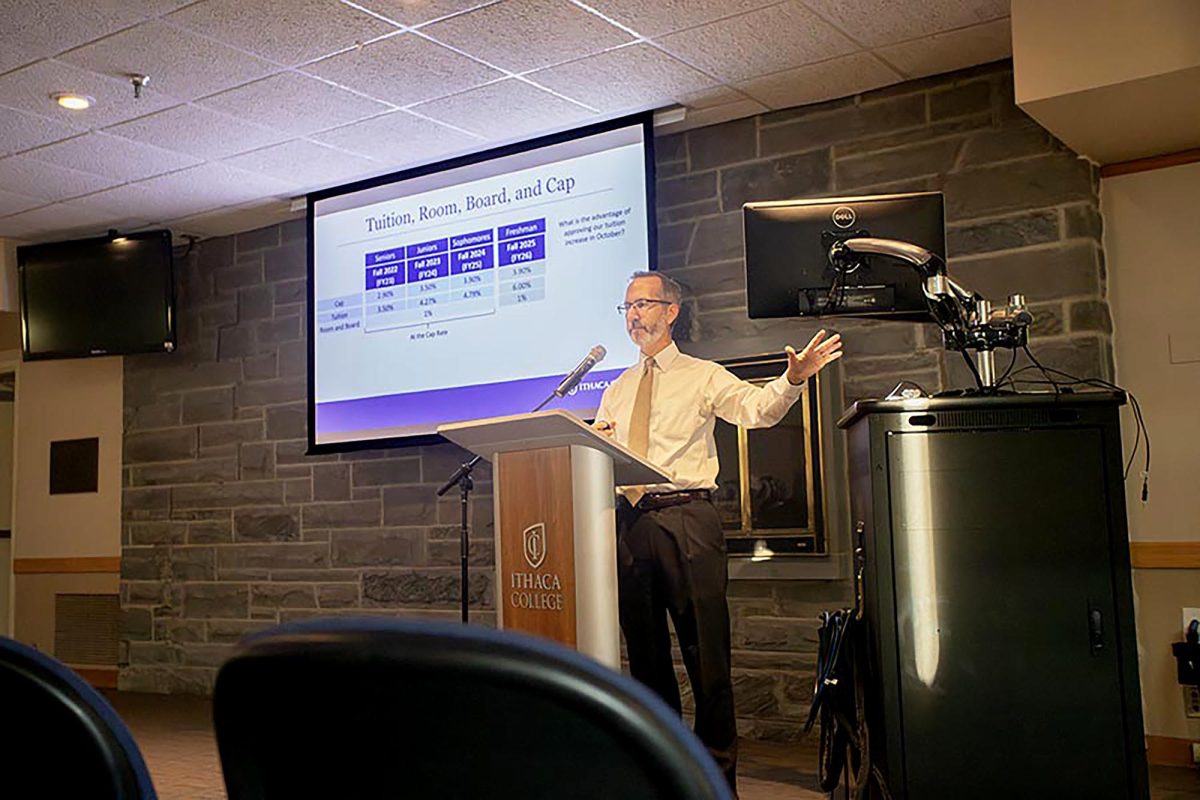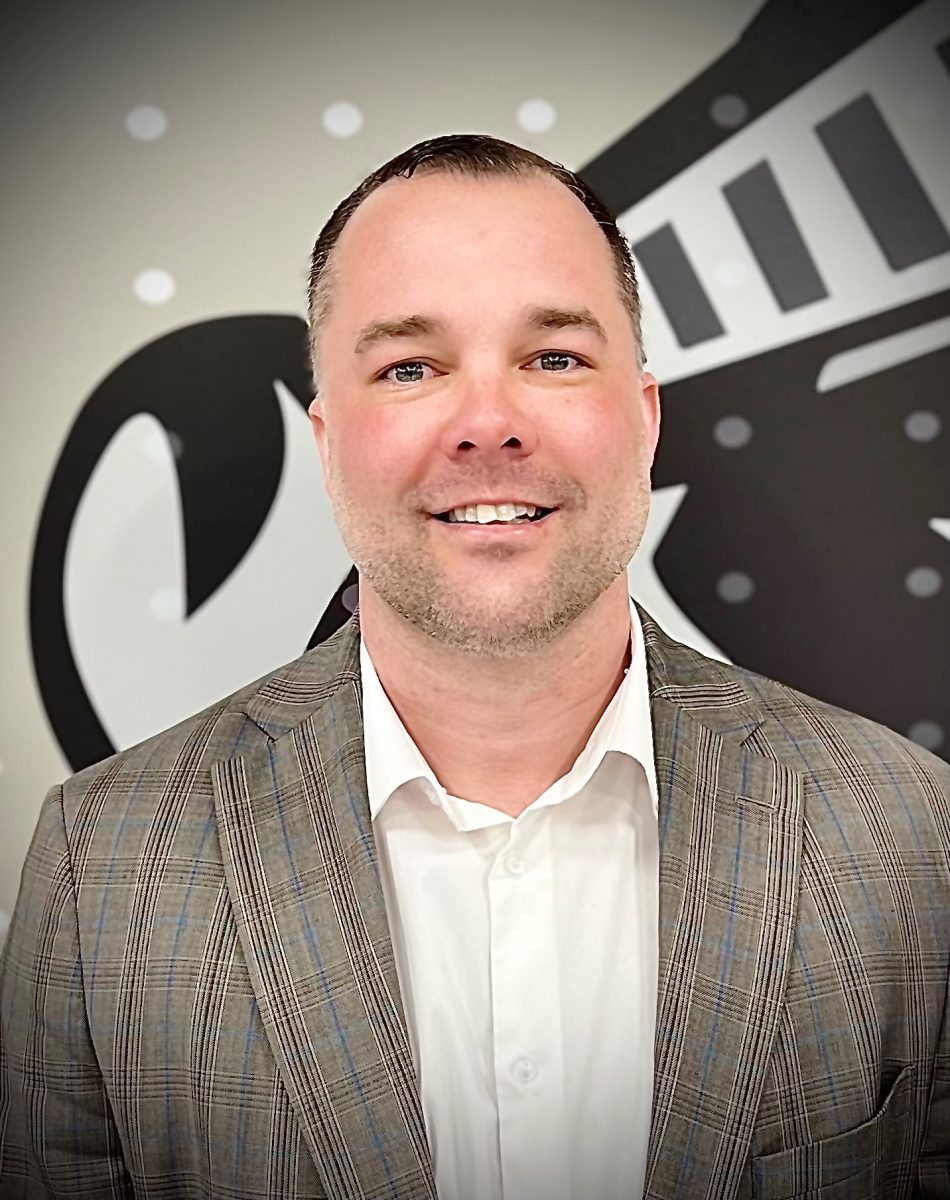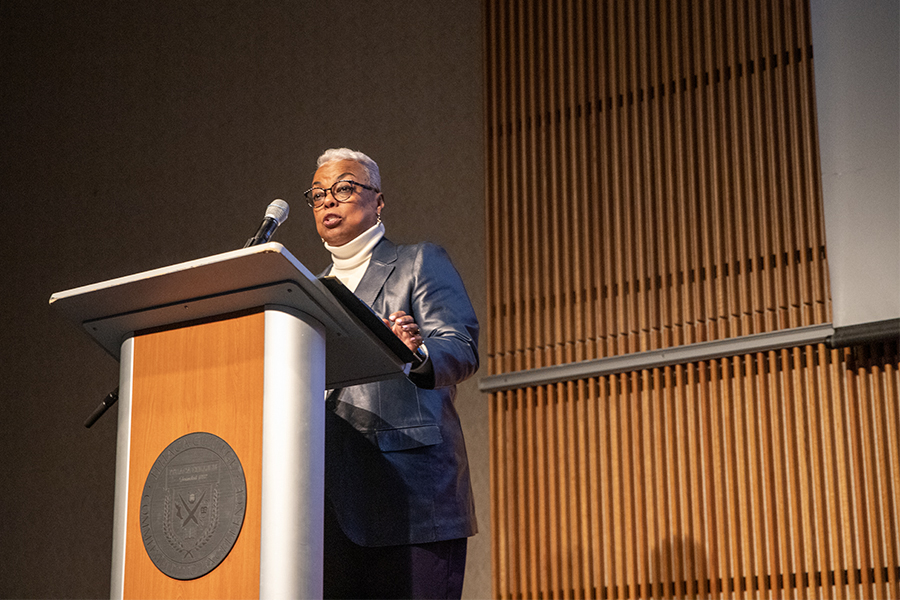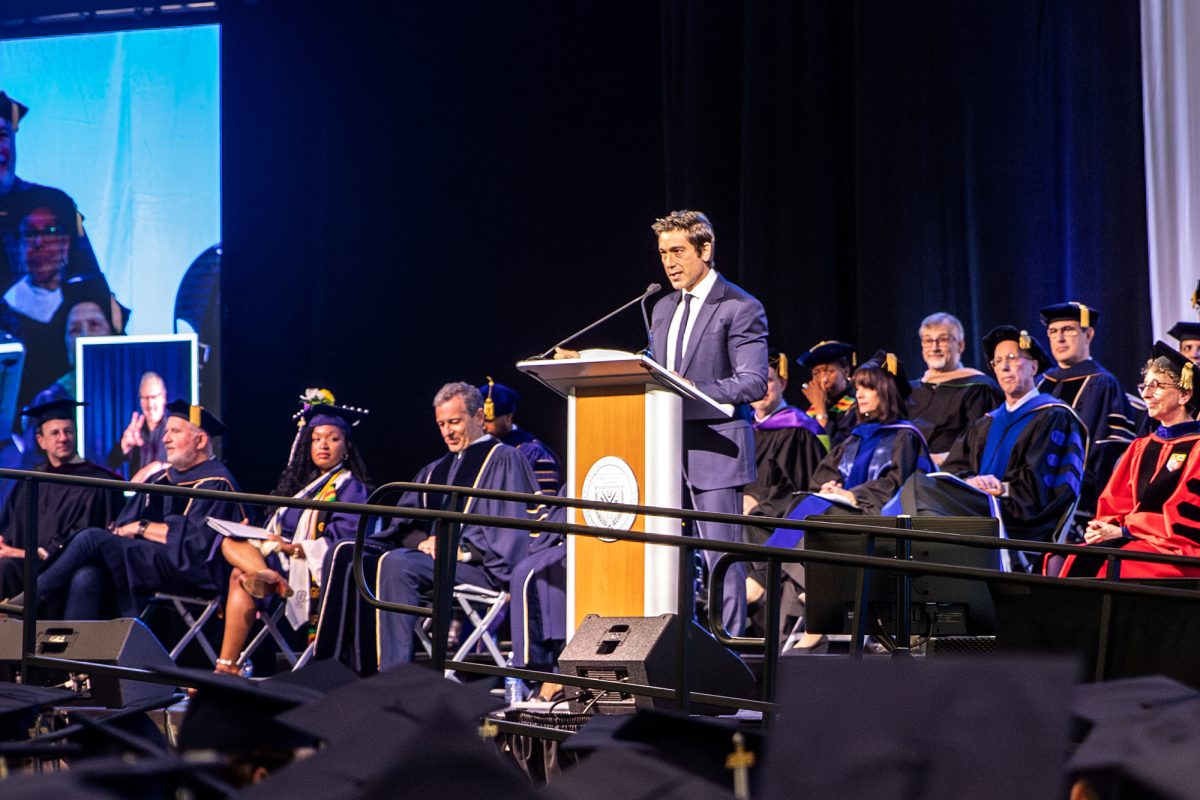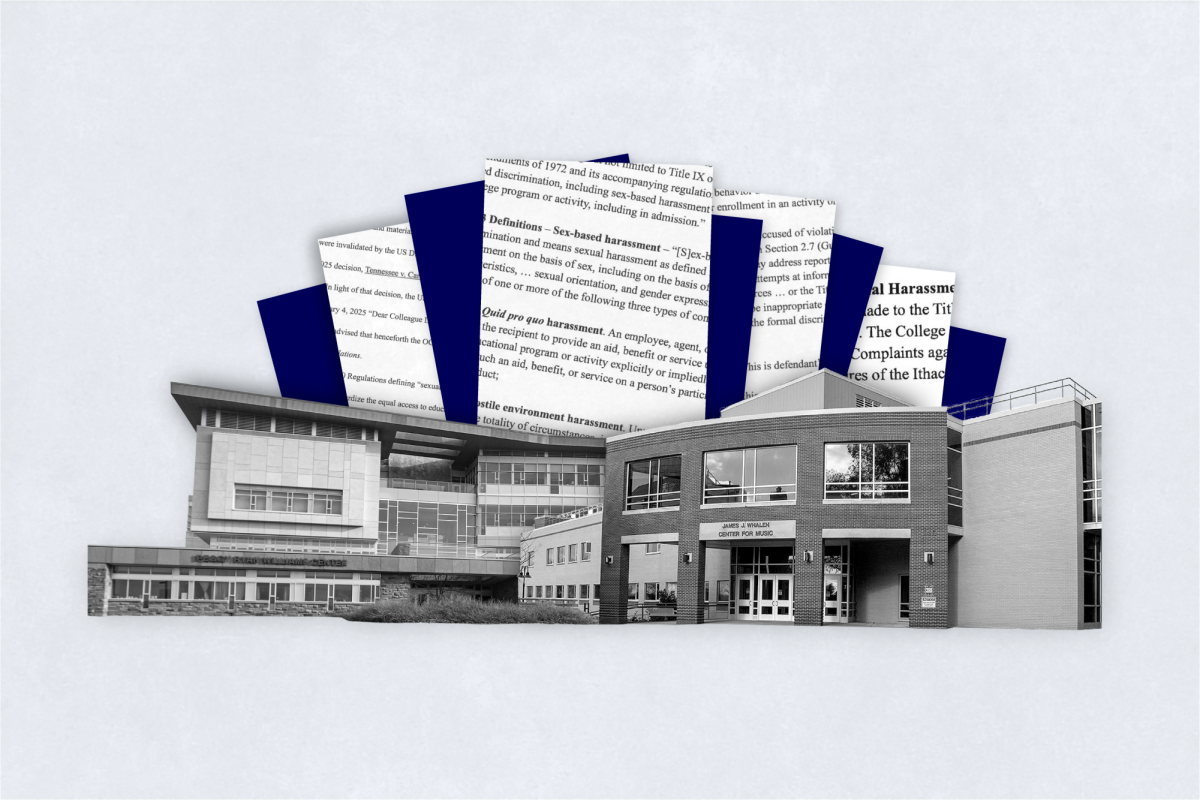Junior Matthew Ristaino’s NBC correspondent crew’s first interview of the day was with one of the founders of the Sandy Hook Promise, who lost her son in the 2012 elementary school shooting, at the March for Our Lives on March 24 in Washington, D.C.
The March for Our Lives was a demonstration in support of gun control held in Washington, D.C., with sibling marches across the country. It was organized by the survivors of the Parkland, Florida, school shooting and an estimated 200,000 to 800,000 supporters attended. Students from Ithaca College traveled to Washington to report on the march.
The Roy H. Park School of Communications sent fives students to cover the march in collaboration with NBC and MSNBC. James Rada, associate professor and chair of the Department of Journalism, said the students — sophomore Kristen Mirand, juniors Matthew Ristaino and Jack Sears and seniors Kenneth Bradley and Meredith Husar — were selected based on the journalistic aptitude they display.
Rada said the opportunity for students to cover the march was brought up March 7 when Jamie Kraft, senior executive producer of MSNBC, emailed to ask if any of Rada’s students were planning on covering the march. Covering the march was not initially planned, but Rada said that this was not an opportunity he wanted to pass up.
Rada also said that covering live events like the march is a rare opportunity that cannot be offered in most journalism programs or extracurriculars. Additionally, when covering larger events like the march, the knowledge students gain goes beyond journalistic experience, Rada said.
“It’s not just educational experience for journalists,” Rada said. “It’s what it means to be an American. It’s democracy in action.”
Husar and Mirand worked with MSNBC’s social media team to collect photographs, videos and interviews from the march. Their content was posted on the network’s Instagram, Twitter and Facebook accounts.
Mirand said she witnessed many things that impacted her at the march, including protesters holding up signs for their family members and openly crying during the demonstration. She was also in awe of the attendees’s cooperation and support of the speakers, she said. However, one of the things that impacted Mirand the most, she said, was the centralized message the marchers all supported.
“I think the overall message from everybody that we asked was just they’re ready to see this change,” Mirand said. “They want to know that everyone will be safe, not only in schools, just across the country.”
Husar said she was moved by the message the crowd at the rally was advocating for, and she often found herself getting emotional. She was particularly moved by the cooperation and eagerness participants showed the media, she said.
“As journalists, one of the things we have to get used to is being told no,” Husar said. “But at this event, we talked to probably hundreds of people that day. Nobody said no.”
Ristaino was assigned to assist NBC Correspondent Mariana Atencio’s crew with their live shots during the rally and the day before. He helped find people to interview, preparing Atencio for interviews and editorial pieces and anything else the crew needed.
While working in Washington, Ristaino said, he realized his perspective of and emotions about school shootings became stronger after interacting with people who were directly affected by them.
“It just becomes a whole lot more real when you talk to the actual people involved,” Ristaino said. “Hearing their stories directly from them was pretty powerful.”
Sears worked with NBC and MSNBC’s digital team and covered the vigil for gun violence victims at the National Cathedral on March 23 and the march the following day.
Bradley also assisted an NBC correspondent’s crew, Rada said.
Another student who attended the march was freshman Malick Mercier, who was asked if he wanted to cover the event by Instagram Producer Alina Grosman. At the march, Mercier worked with Grosman and photographer David Guttenfelder.
Mercier was given the opportunity because Instagram was looking for a journalist with a noteworthy Instagram account who fit the demographic of being old enough to travel independently but was still young enough to relate to the student leaders of the march, he said.
Mercier said the number of young children who were active in the march stood out to him. One of his encounters was with a 10-year-old boy who told Mercier that he did not feel safe in school, he said.
“When you look into a child’s eyes that young with a sign just saying ‘after the shooting, I really didn’t feel safe,’ and when they’re that young, you can really see it,” Mercier said. “The fact that now 10-year-olds feel responsibility to fix our gun issue is something, too. That was very important.”
Sophomore Andrew Hallenberg, a film, photography and visual art major, also attended the event. Hallenberg attended because of his personal beliefs about the march’s cause, to work on his documentary about the march and the push for gun legislation.
Part of the reason he attended the march in Washington is that his hometown is Fort Lauderdale, Florida, which is only 20 minutes from where the Parkland shooting took place, he said. Hallenberg said his documentary is currently planned to consist of interviews with members of the Stone Douglass High School community that he conducted while home for spring break and the footage he took of the march in Washington. He is also crowdsourcing footage from other marches across the country.
“I’m doing everything I can as I go along to try to tell the most honest and powerful story that I can,” Hallenberg said.
Hallenberg hopes the documentary will be done in about one to two weeks, and will be posted on his YouTube channel, he said.
Correction: An earlier version of this story incorrectly identified the senior executive producer of MSNBC.




